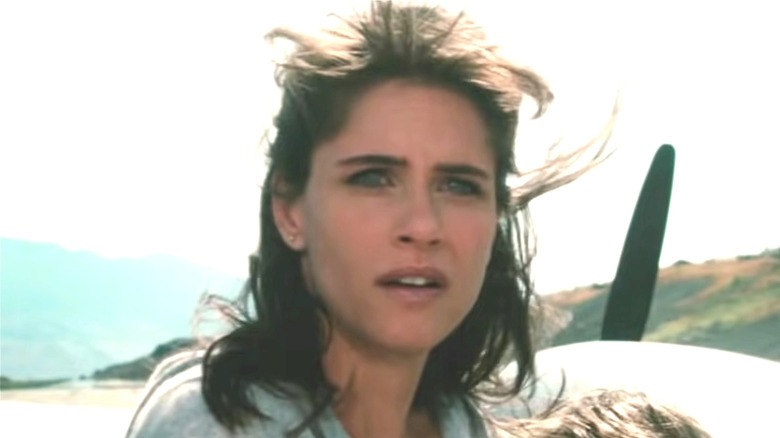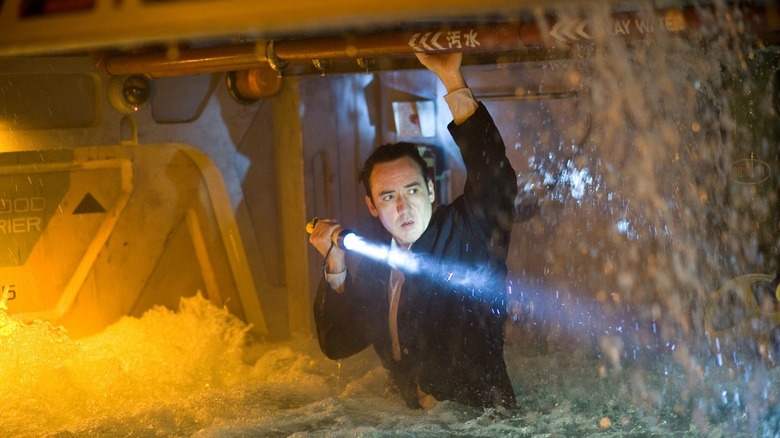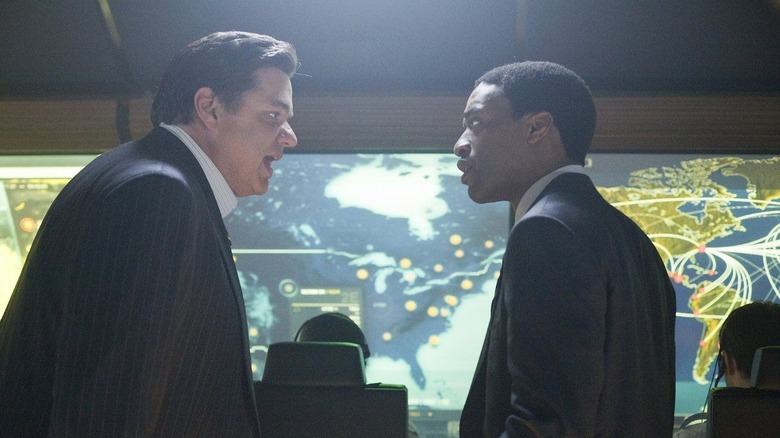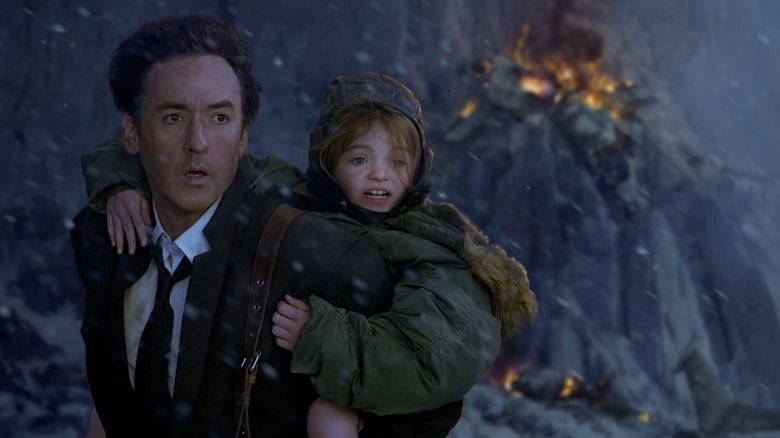The Ending Of 2012 Explained
Sometimes in a movie, the means can justify the ends.
Director Roland Emmerich had no particular interest in the supposed Mayan prophecy that the world would end on December 21, 2012. What he did want to do was make a biblical flood movie, and found his excuse to destroy the world this time in a combination of the Mesoamerican Long Count Calendar and the pseudoarcheology book "Fingerprints of the Gods," which claims that an ancient advanced civilization met a disastrous end around the time of the last Ice Age. Given that this is the man who made "Independence Day," chances are audiences were coming to see how he was planning to end the world, not why or what was going to happen after the fact.
In this regard, the film was successful. Roger Ebert said the film delivered exactly what was promised, if nothing else. "You think you've seen end-of-the-world movies?" his 3.5-star review read. "This one ends the world, stomps on it, grinds it up and spits it out." The Washington Monument cracks in half. St. Peter's Basilica topples over, complete with an extremely on-the-nose crack forming between the fingertips of God and Adam in Michelangelo's famous scene depicting the Creation of Adam. Los Angeles collapses into the seas. The Yellowstone caldera erupts in a hailstorm of fiery meteors. An aircraft carrier is lifted ashore by a massive wave and crushes the White House. Dogs and cats, living together. It's mass hysteria, but how exactly does it all go down, and what is it trying to tell us about people and our interactions with our environment?
Why does the world end in the movie 2012?
Technically, the plot point by which an excess amount of a new type of solar radiation gets trapped in the Earth's core and heats it to dangerously unsustainable levels is rather similar to the scientific consensus about global climate change, just moved a couple of layers inward from the atmosphere to the lithosphere. Sure, it's all a load of hooey, but there is, theoretically, an opportunity for a metaphor there.
Emmerich's not really interested in the specific mechanics of the disaster. After all, he already made his climate change movie, 2004's "The Day After Tomorrow," and while that film was unequivocal about the dangers a rapidly changing climate could pose to humanity, neither the results nor the process by which those dangers are presented in the film hold up to scientific scrutiny.
The same is true of "2012," which a panel of NASA scientists once voted the most scientifically-flawed film ever made. In "2012," there's no hope of reversing or mitigating the oncoming disaster. One year after the new danger is discovered, the governments of the world are already building a series of massive arks meant to preserve some tiny fraction of humanity through the cataclysms that are to come. It's here where the film's message, such as it is, arrives.
What does the movie 2012 have to say about crisis response?
Rather than looking at how the world might rally in order to respond to a looming disaster, the film points at the cynicism with which the people in power treat the general population. The arks are funded by selling some of their spots for €1 billion apiece, with much of the remaining allotment given to people deemed important enough to be worth saving. Everyone else is on their own.
This thread was played up in its marketing even before the movie reached theaters. The film's first teaser features text asking, "How would the governments of the world prepare six billion people for the end of the world?" then answers its own question as a massive tide of floodwater rushes over the Himalyas: "They wouldn't." Its full-length trailer shows Chiwetel Ejiofor's geologist Adrian Helmsley asking the question of the White House Chief of Staff Carl Anheuser (arch-cynic extraordinaire Oliver Platt), "So when do you let the people know?"
The withering look Anheuser gives him out to be enough, but the trailer includes his answer about preserving that continuity of the species, and Helmsley's own disbelief that they won't give the people a chance to fight for their lives.
Can anyone beat the odds in the face of 2012's disaster?
That's exactly what Jackson Curtis (John Cusack) does for his two children and his ex-wife Kate (Amanda Peet). Curtis is a struggling science fiction writer moonlighting as a chauffeur who stumbles upon evidence of what's happening at Yellowstone National Park and sets out on a desperate journey to ensure his and his family's survival.
But even they are helped by their connections to wealth and power. Kate is dating a doctor (Tom McCarthy) with a pilot's license who helps them escape from a collapsing Los Angeles. Jackson works for a Russian billionaire (Zlatko Buric) whose plane flies them to China to rendezvous with the arks. The ticketless family is turned away at the door — it feels very "let the first-class passengers onto the lifeboats" — but manages to stowaway on another ark, and even save it from flooding for good measure. So the film is also about that oldest of subjects: a father's all-consuming desire to ensure the safety of his family.
While the Curtis family is saved, the floodwaters rage outside. Their family of four has made it, has beat the system and the callous indifference of those preparing for the catastrophe. Another 5.9 billion people did not. Hopefully, they got to see something cool on their way out.



